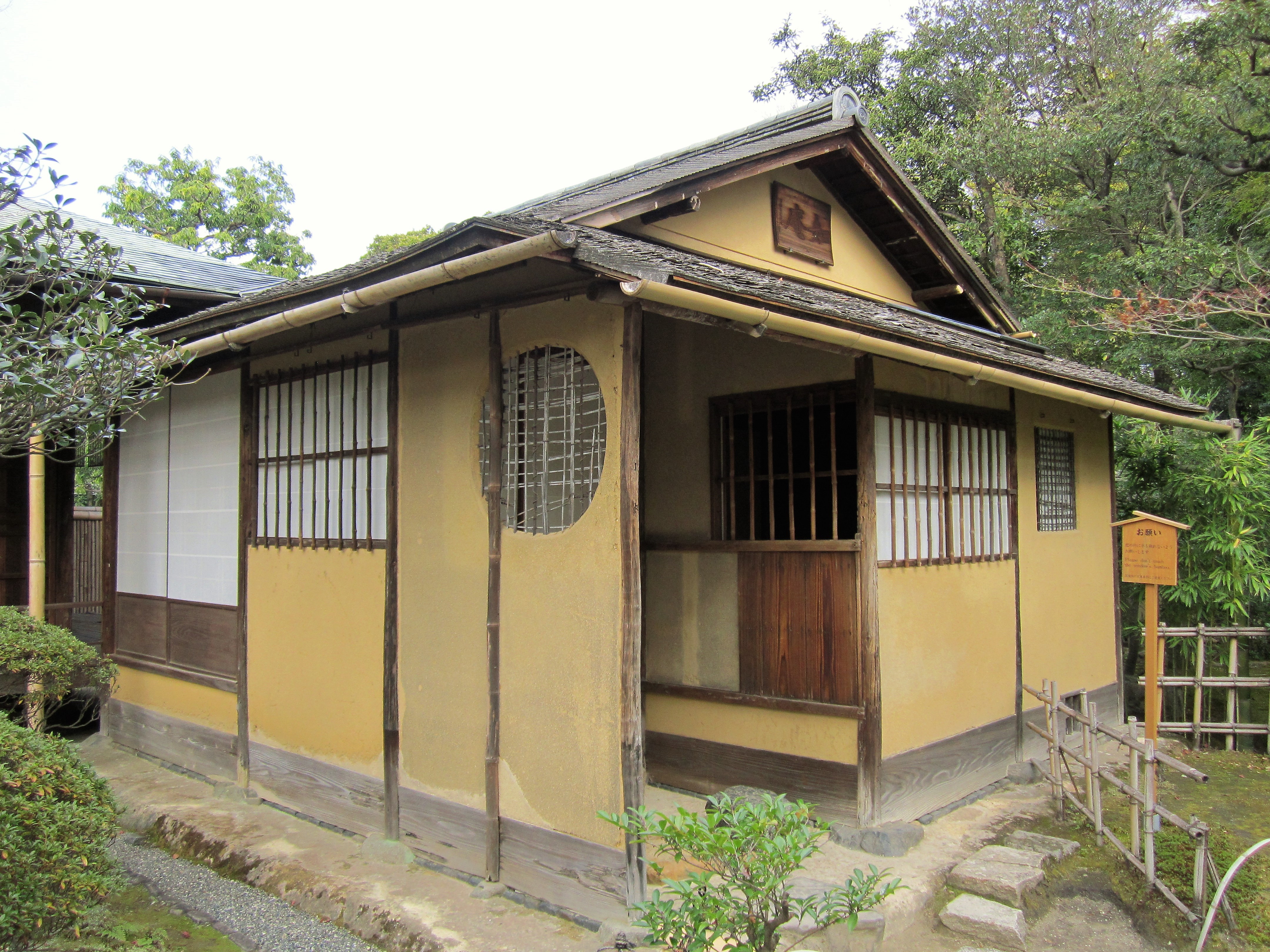Jo-an on:
[Wikipedia]
[Google]
[Amazon]
 is a seventeenth-century
is a seventeenth-century

 Jo-an is approached through the ''
Jo-an is approached through the ''
 is a seventeenth-century
is a seventeenth-century Japan
Japan ( ja, 日本, or , and formally , ''Nihonkoku'') is an island country in East Asia. It is situated in the northwest Pacific Ocean, and is bordered on the west by the Sea of Japan, while extending from the Sea of Okhotsk in the north ...
ese teahouse (''chashitsu
''Chashitsu'' (, "tea room") in Japanese tradition is an architectural space designed to be used for tea ceremony (''chanoyu'') gatherings.
The architectural style that developed for ''chashitsu'' is referred to as the ''sukiya'' style (''suk ...
'') located in Inuyama, Aichi Prefecture
is a prefecture of Japan located in the Chūbu region of Honshū. Aichi Prefecture has a population of 7,552,873 () and a geographic area of with a population density of . Aichi Prefecture borders Mie Prefecture to the west, Gifu Prefectur ...
. ''Jo-an'' is said to be one of the three finest teahouses in Japan and has been in its current location in Inuyama since 1972.
''Jo-an'' was designated a National Treasure
The idea of national treasure, like national epics and national anthems, is part of the language of romantic nationalism, which arose in the late 18th century and 19th centuries. Nationalism is an ideology that supports the nation as the funda ...
in 1951.
History
''Jo-an'' was originally built around 1618 inKennin-ji
is a historic Zen Buddhist temple in Kyoto, Japan, and head temple of its associated branch of Rinzai Buddhism. It is considered to be one of the so-called Kyoto ''Gozan'' or "five most important Zen temples of Kyoto".
History
Kennin-ji was ...
, Kyoto
Kyoto (; Japanese: , ''Kyōto'' ), officially , is the capital city of Kyoto Prefecture in Japan. Located in the Kansai region on the island of Honshu, Kyoto forms a part of the Keihanshin metropolitan area along with Osaka and Kobe. , the ci ...
, for Oda Urakusai, the younger brother of ''daimyō
were powerful Japanese magnates, feudal lords who, from the 10th century to the early Meiji era, Meiji period in the middle 19th century, ruled most of Japan from their vast, hereditary land holdings. They were subordinate to the shogun and n ...
'' Oda Nobunaga
was a Japanese ''daimyō'' and one of the leading figures of the Sengoku period. He is regarded as the first "Great Unifier" of Japan.
Nobunaga was head of the very powerful Oda clan, and launched a war against other ''daimyō'' to unify ...
and a disciple of tea ceremony master Sen no Rikyū
, also known simply as Rikyū, is considered the historical figure with the most profound influence on ''chanoyu,'' the Japanese "Way of Tea", particularly the tradition of '' wabi-cha''. He was also the first to emphasize several key aspects ...
. ''Jo-an'' has been relocated a number of times, but since 1972 has formed part of the Urakuen gardens in Inuyama, Aichi Prefecture
is a prefecture of Japan located in the Chūbu region of Honshū. Aichi Prefecture has a population of 7,552,873 () and a geographic area of with a population density of . Aichi Prefecture borders Mie Prefecture to the west, Gifu Prefectur ...
, part of the historic Owari Province which the Oda clan
The is a Japanese samurai family who were daimyo and an important political force in the unification of Japan in the mid-16th century. Though they had the climax of their fame under Oda Nobunaga and fell from the spotlight soon after, several ...
ruled starting in the 15th century.
Architecture
 Jo-an is approached through the ''
Jo-an is approached through the ''roji
, lit. 'dewy ground', is the Japanese term used for the garden through which one passes to the ''chashitsu'' for the tea ceremony. The roji generally cultivates an air of simplicity.
Development
Sen no Rikyū is said to have been important in th ...
'' ('dewy ground') garden. It consists of a ''chashitsu'' (tea room), a three tatami mat ''mizuya
is the term for the preparation area in a Japanese tea house ( ') or attached to any venue used for the Japanese tea ceremony. For instance, the area used for preparation during outdoor tea ceremonies is also called the . The term can also refe ...
'' (preparation room), and a one-and-a-half tatami mat ''rōka no ma'' (corridor room). The ''chashitsu'' is composed of two and a half tatami mats, a ''daime'' (three quarter tatami mat), and a ''toko
Toko is a small rural settlement 10 kilometres east of Stratford, New Zealand, at the intersection of East Road ( State Highway 43) and Toko Road. It is located on a railway, the Stratford–Okahukura Line, the western portion of which was o ...
''. The building has a shake roof and a '' nijiriguchi'' ('crawling-in entrance').
See also
*Japanese tea ceremony
The Japanese tea ceremony (known as or ) is a Japanese cultural activity involving the ceremonial preparation and presentation of , powdered green tea, the procedure of which is called . While in the West it is known as "tea ceremony", it is se ...
*List of National Treasures of Japan (residences)
The term " National Treasure" has been used in Japan to denote cultural properties since 1897.
The items are selected by the Ministry of Education, Culture, Sports, Science and Technology based on their "especially high historical or artistic v ...
References
External links
* Chashitsu National Treasures of Japan Inuyama, Aichi {{Japan-struct-stub